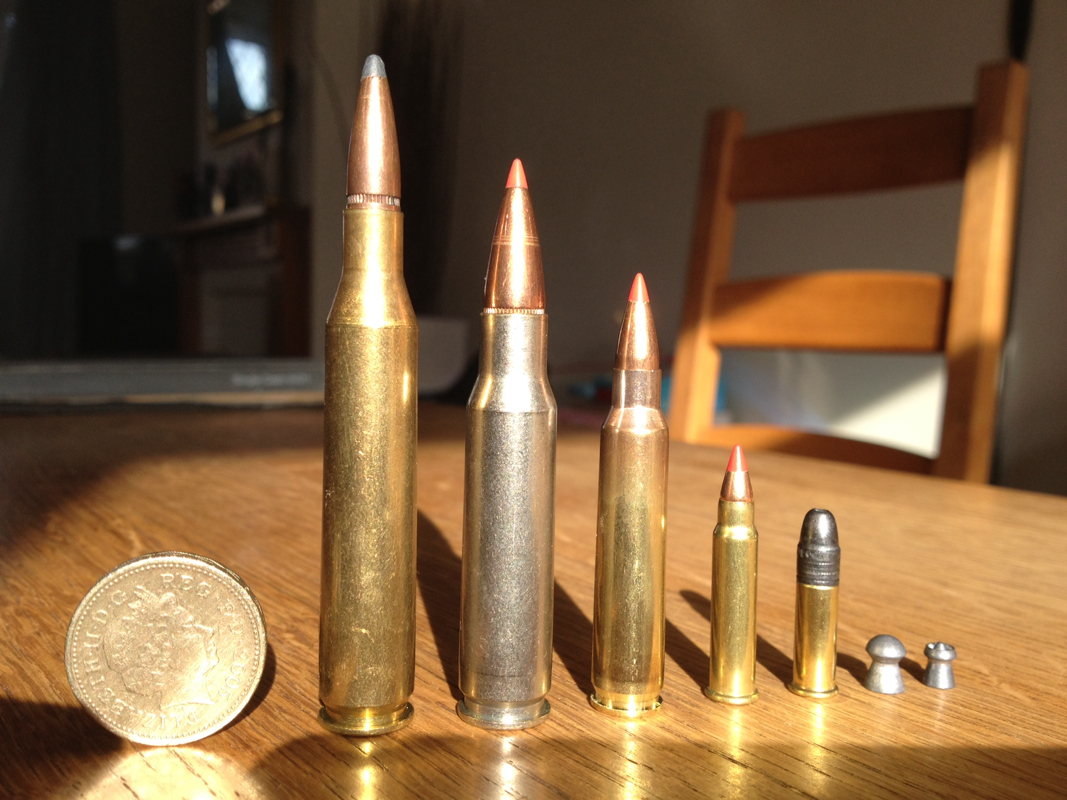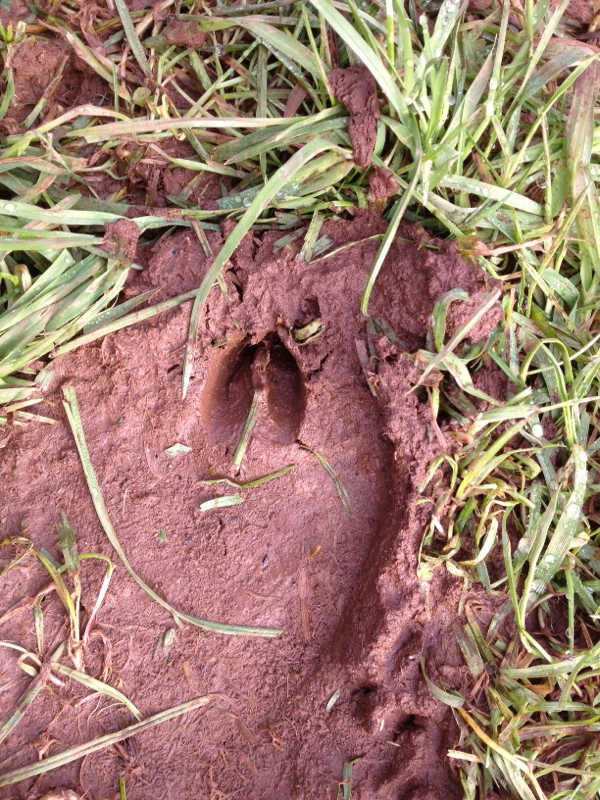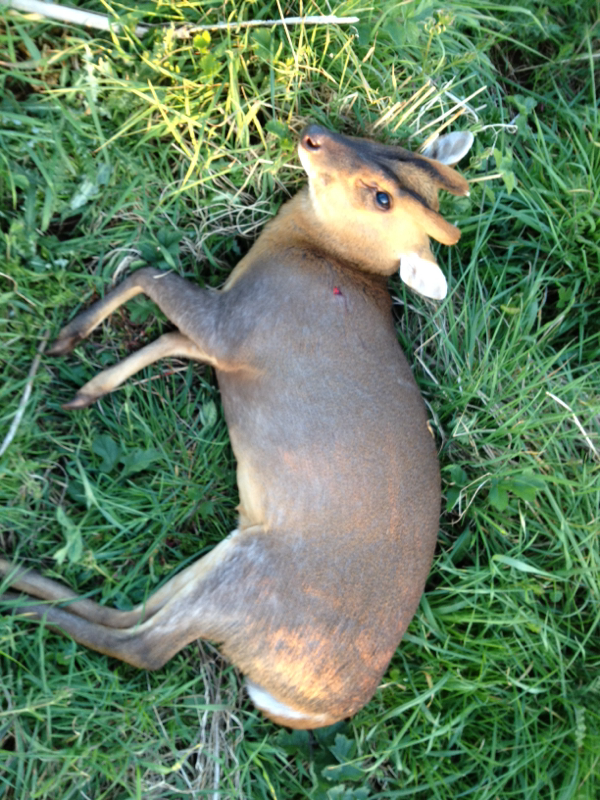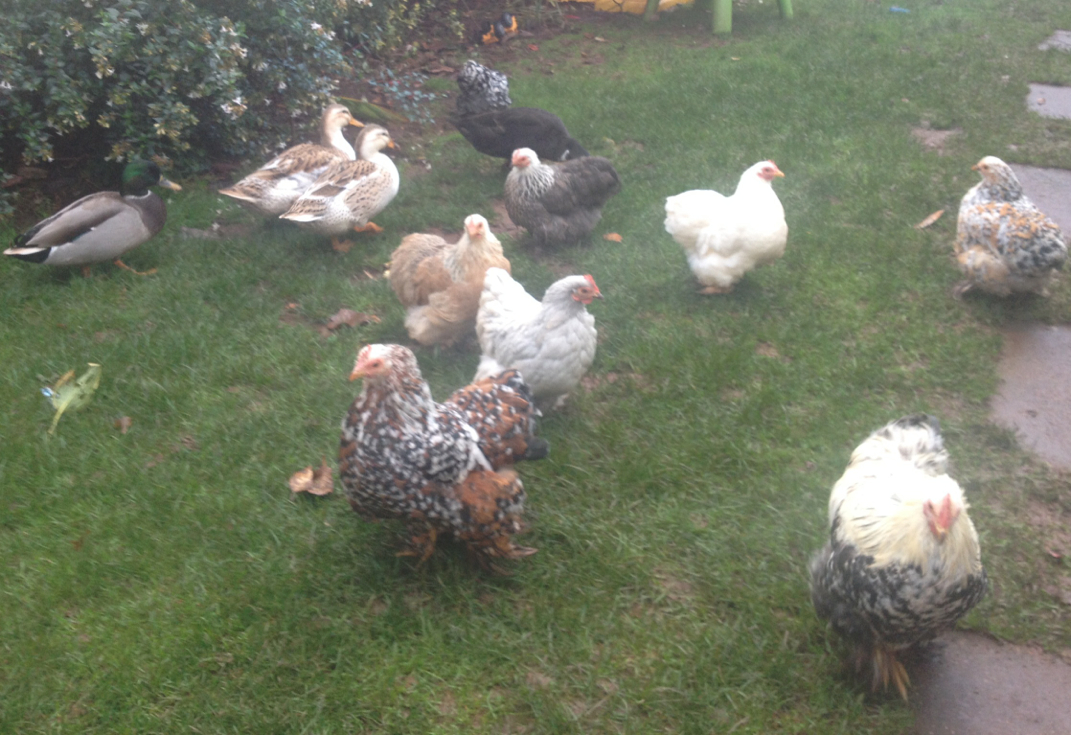The .25-06 is a great calibre. The bullets have high ballistic coefficients. Hence it's trajectory is pretty flat and the recoils is very modest. I've got a delux wooden stock on my .25-06 and use it mainly for managing deer, where I am unlikely to knock it. Mine will shoot a 117gr Bullets at around 3,100 ft/s and produces around 2,500 ft/lbs. I initially had an issue with meat damage using the .25-06, when using Sierra Gameking Bullets, but I switched to Hornady bullets, which have thicker jackets and no longer get this problem.
The .308 has a synthetic stock and is my work horse gun for managing deer. I mainly use 125gr Hornady SSTs producing a muzzel velocity of around 3,100 ft/a and 2,700 ft/lbs.
The .223 is my foxing gun. Quieter and very low recoil, it will kill a fox at any distance that I am willing to shoot at. I use 50gr Hornady Vmax for fox and 50gr SP for Muntjac Deer. I will use this for muntjac in areas where I have concerns about over penetration, for safety reasons. Used at moderate ranges it humanly and instantly kill muntjac. I will only use it to ranges of 150 yards on deer. People doubt the effectiveness of a little 223 on muntjac, but trust me this is just opinion. I've never had a problem. It makes tiny exit holes. But due to the speed of the bullets, even these tiny bullets cause massive internal damage, which can be seen on gralloching the deer. Mine will shoot both 50gr bullets at around 3,300ft/s and 1,200 ft/lbs of energy. The great thing about the 50gr Vmax and the SP from Hornady, is that they have the same point of aim, so that I can switch between them without re-zeroing.
The 17HMR is my go to gun for long range summer rabbiting. You have to head shoot the rabbits with a 17HMR or the little explosive bullets destroy too much meat. I tested mine on a windless day and could shoot the base of red bull cans consistently at 150 yards.
The .22LR is used for situations where noise could be an issue. Such as lamping rabbits at night. Ricochets can be a problem with the 22LR and so a good back stop is essential. Some ammunition is better than others on the front. I find that the Eley Subs are made of soft lead and I have had less of a problem with them. I tried the Segmented hollow points, which fragment on impact. These wouldn't group satisfactory enough for me. Accuracy is the most important factor to me when chosing ammunition, to ensure ethical and clean kills.
I use the .22 FAC airgun for shooting squirrels and pigeons out of trees. 30ft/lbs 950 ft/s.
The .177 airgun 12ft/lbs 800ft/s, is used for plinking mainly. But I have used it to shoot mice around the chicken and duck coups.
I home load all of my centrefire rifles. Since I have done this, I have improved the accuracy of all of my rifles dramatically. As well as reducing the costs of the ammunition. Factory ammunition is always manufactured short, you can see the difference in length clearly, by comparing my home loads to factory ammunition. Due to the reduced length, the bullet has to jump to engage the rifleing. This combines with a less consistent powder loads, seems to have an effect on the accuracy of factory loads. I've managed a .375 inch group shooting 5 rounds prone at 100 yards from my .308 for example. I could never get anywhere near this with factory ammunition.
I use moderators on all of my rifles to reduce both the noise and the recoil. I also don't like to use ear protection, so that I can hear if anyone or any animals are nearby.
I use a 12 bore O/U for shooting game and a 12 bore semi auto for wildfowling or rough shooting. Using a semi auto means that I can shoot heavy loads through it without getting a pounding from the recoil.
I occasionally use a 20 bore, as it is light, if I am carrying a gun on a long days shooting.
And I use the .410 Stealth when I need a quiet shotgun.










 RSS Feed
RSS Feed
